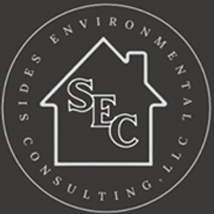Lead Based Paint Testing
SEC provides comprehensive lead-based paint inspections, risk assessments, ELB reports, and hazard screenings following HUD protocols. Using non-destructive X-Ray Fluorescence (XRF) technology, SEC identifies the presence of lead without damaging surfaces. Lead poisoning, especially in children, can cause irreversible brain damage, developmental delays, reduced attention span, and nerve damage. In adults, it may lead to reproductive issues, poor coordination, and organ damage. Composite soil, dustwipe, and bulk paint samples collected during assessments are analyzed by an NVALP-accredited lab per EPA standards. SEC delivers detailed reports including test results, locations, and control or abatement options. Don’t take risks—contact SEC today to have your property professionally tested for lead paint.
Indoor Air Quality Testing
SEC performs indoor air quality (IAQ) assessments on structures for the purpose of identifying air quality problems or concerns associated with mold, radon, CO, CO2, VOCs, formaldehyde, ammonia, particulates, relative humidity, filtration, outdoor ventilation, bacteria, and thermal conditioning. SEC assists clients in assessing the cause of current or potential IAQ problems and provides mitigation options, specifications, and clearance inspections. Contact the SEC team today to get your home or office space tested!
Energy Audit
SEC can perform residential and commercial energy audits that can provide the diagnostic testing to help identify your energy consumption. SEC utilizes the most up to date expertise and techniques to identify areas where residential and commercial structures are losing excess amounts of energy. Once the areas of energy loss are identified, SEC provides the client with a retro-fitting option and activity changes that can decrease energy consumption.
Radon Testing
The Surgeon General has warned that radon is the second leading cause of lung cancer in the United States. Radon is a radioactive gas. It is colorless, odorless, tasteless, and chemically inert. Unless you test for radon, there is no way of qualifying how much is present within a structure. Radon comes from the natural radioactive decay of uranium in rock, soil, and water. It is found in all 50 states.
Radon is a cancer-causing radioactive gas that you cannot see, smell or taste. The presence of radon in your home or commercial building can pose a danger to the occupants health. Radon is the leading cause of lung cancer among non-smokers and the second leading cause of lung cancer in all Americans. Protect your family from Radon’s hazardous effects. Let SEC test your home for Radon today!


